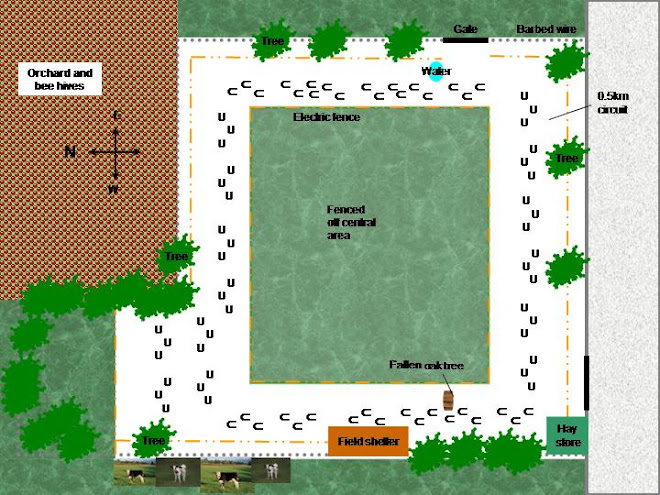Ok, third post in 24 hours, can you tell I am supposed to be doing my tax return?
In response to query, how to spot contraction? I find this easier to show in pictures http://danceswithgrace.blogspot.com/2009/10/hooves-are-dynamic.html and Grace was and continues to be an excellent study.
Again remember hooves can go both ways. If I shod Grace or didn't manage her according to her needs they could go the other way just as easily.
Regarding thin soles; I hate to be boring, to sound like a nag or for anyone to feel exasperated/frustrated or worse, but it really is all about Diet and Exercise and a half way decent trim. Unfortunately shoes tend to exacerbate (and often cause) the problem. Partly from loss of circulation, partly from preventing the hoof mechanism working properly, sometimes because of how the farrier chooses which shoe to set and how it is set. And of course they mask a lot of problems without addressing cause. And any well trained, experienced hoof care professional will tell you the same.
Word of warning, because shoes mask problems and numb the feet a shod horse with a thin sole can be more at risk not less. I know it is then popular to pad, but this is literally swopping one problem with another and generating more expense, whilst doing nothing at all to fix the cause.
Thin soles can be nightmareish, especially for some people in some areas, but if you stick to the AANHCP guidelines, shut out the Ear Mites and take a deep breath they can be fixed really quite quickly. And if you are really struggling then boot, don't shoe. Because boots won't restrict the circulation and you can take them off and put them on as needed, which allows the hoof to develop and grow during 'off' time.
Diet wise thin soles can be a reflection of inflammation caused by diet and/or other toxic overload. And a hoof which is never worked and kept permanently on soft surfaces never gets the chance to build up a good solid, dense layer.
I can't show it pictorially, but density is important. As the (bare) hoof works over firmer surfaces the solar material compacts. I often think of felting as an analogy but then peeps tell me they don't know how that works. Others refer to 'callousing' but that doesn't really describe it either because that suggests hard places and soft places; whereas a properly worked hoof is hard and dense across the whole horny solar surface.
You could try thinking of hard plastic as opposed to bubble wrap?
This post http://barefoothorseblog.blogspot.com/2010/10/tripping.html shows a horse with a spectacularly contracted foot. In the solar view (with shoe) it is hard to tell just how thick the sole is (very with lots of chalk).
I am not sure this helps? Let me know
Shoes mask weaknesses, barefoot highlights strengths
Tuesday, 18 January 2011
Subscribe to:
Post Comments (Atom)








1 comment:
This helps me. I know I'm putting a band-aide my horse with his pads and shoes, but I feel lost to make a change with him. My vets are bumbling and I feel that I'm not sure how to take a step to make his feet what they need to be. I know it's possible, as his hinds are fabulous.
My location is not the best, and I worry that he won't be able to have the amount of exercise and movement he needs to get to be 100% sound.
Post a Comment